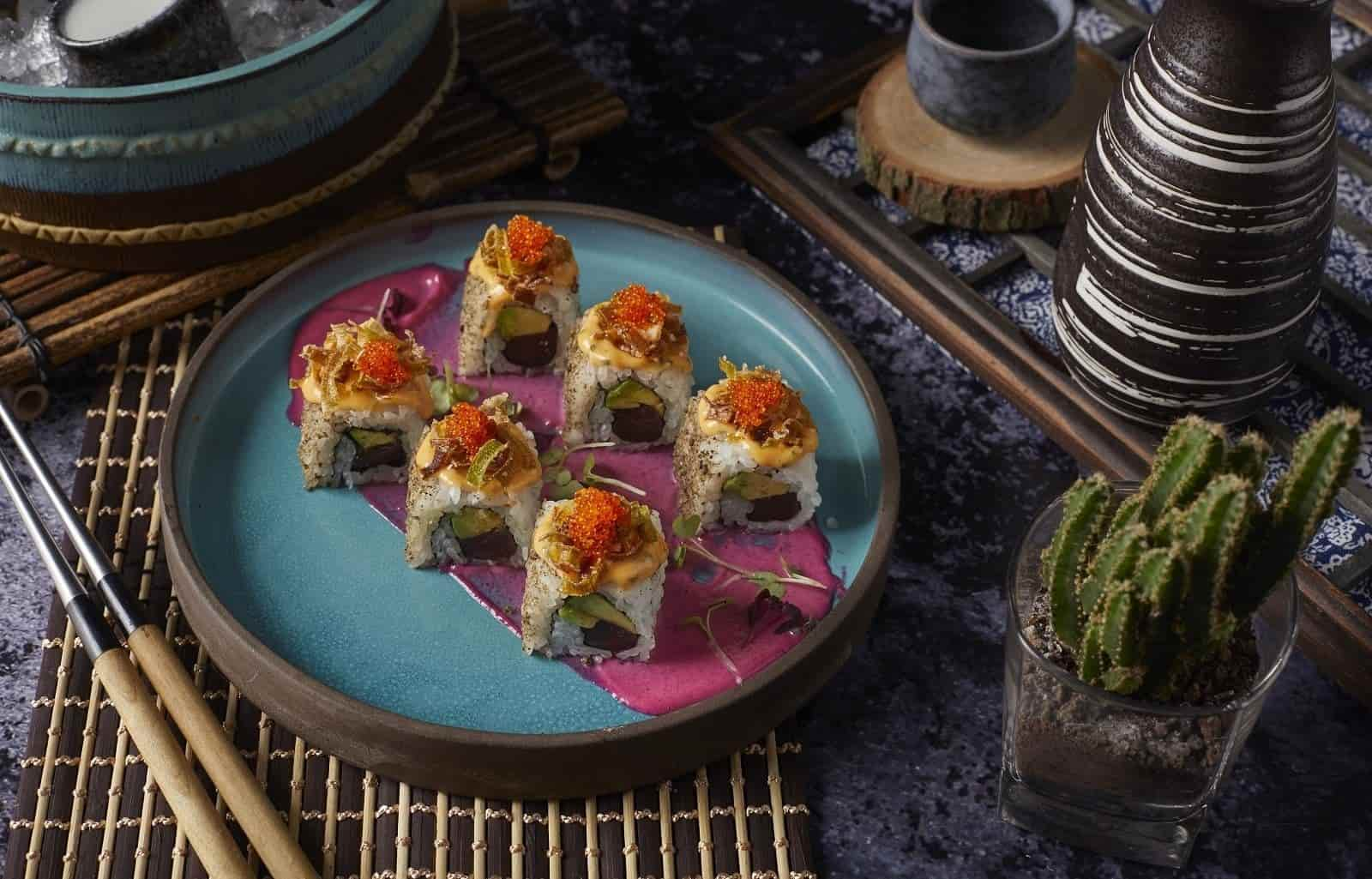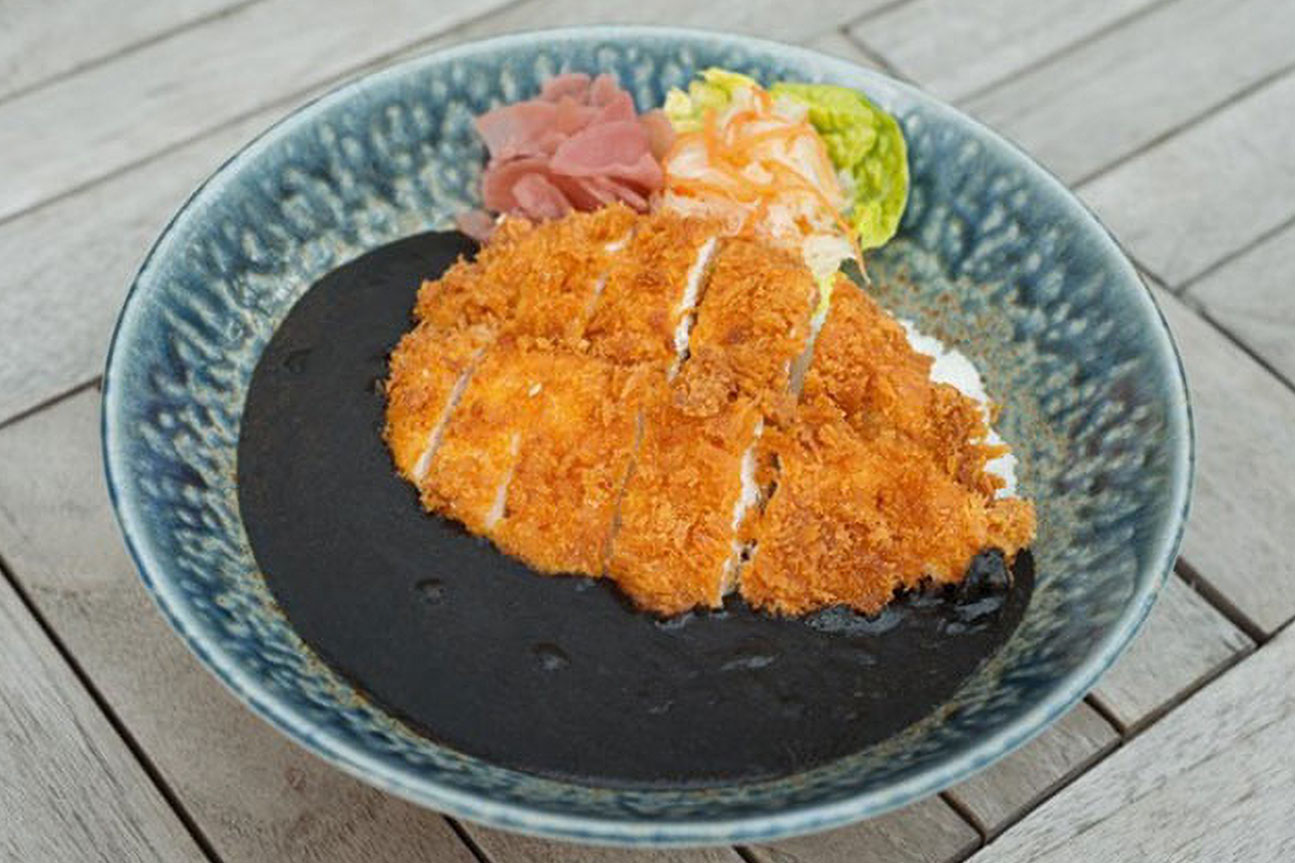
The story of how katsu curry conquered the UK
A quick search on the website of the UK’s largest supermarket chain turns up no less than 17 “katsu curry” items. Shoppers can choose from chicken and sweet potato katsu curry, katsu curry instant noodles, katsu curry flavored peanuts, mackerel in katsu curry sauce, and katsu curry jasmine rice.
The comfort food combination of Japanese-style curry with katsu (breaded and deep-fried cutlets) is one of the most popular Japanese dishes in the UK. Not only is chicken katsu curry a standard item on Japanese restaurant menus, katsu curry – or increasingly just katsu – has become an on trend Japanese flavor like teriyaki or wasabi, featuring in everything from katsu cashew nuts to katsu mayo.
Katsu curry has even reached the youngest UK palates. Baby food manufacturer Ella’s Kitchen sells pouches of katsu curry as part of its “taste explorers” product range, which is “designed to encourage more adventurous eating from seven months.” A spokesperson for the company explained that Katsu curry was chosen as an “on trend meal from the wider adult category” and is gently spiced to “introduce little ones to the taste of curry without the heat.”

Katsu curry baby food containing chicken and spices
From India to the UK, to Japan, and back to the UK
But how did all this happen? And why katsu curry, not other Japanese dishes?
According to UK-based chef and writer on Japanese food, Tim Anderson (see Taste of Japan’s interview with Anderson,) the origins of katsu curry in the UK go back to the first Wagamama outlet (a chain of Asian fusion restaurants) in 1992. The dish was included on the opening menu at a time when Japanese food was still unfamiliar to most UK diners. Other chains such as Yo Sushi and Wasabi later picked up on the trend and helped put katsu curry in the vanguard of Japanese cuisine’s growing popularity.
“Actually, the bigger question for me is, ‘Why did it take so long?’” says Anderson. “Schnitzel plus mild curry sauce seems like such an easy win for British people – and of course its roots are British anyway.”
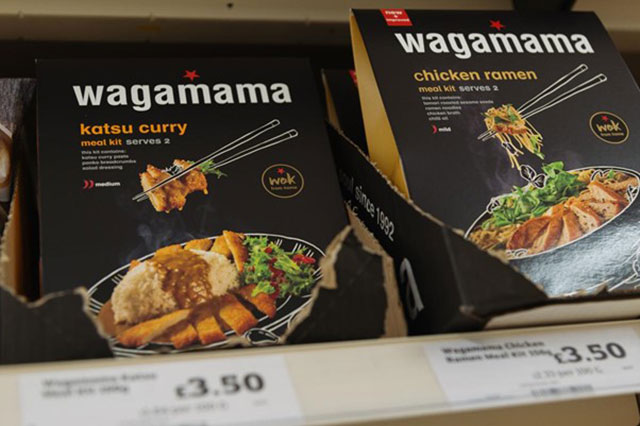
A katsu curry product on sale in an UK supermarket
Those “roots” relate to the unusual story of how curry first reached Japan. It was the British Royal Navy that introduced anglicized Indian curry to their Japanese counterparts in the 1870s. Over time, it became a popular yoshoku (Western-influenced Japanese food) dish, first in restaurants and eventually in homes. It is a story of culinary exchange and fusion; in effect, curry traveled from India to the UK, then to Japan, and then back to the UK again. (A further twist is that Japanese curry is now becoming popular in India itself, alongside foods like sushi and ramen.)
The origins of katsu curry are less clear, but one popular account centers on a small restaurant in Tokyo’s Ginza district. A baseball player among the restaurant’s regular clientele would sometimes order curry and katsu as two dishes. One day in 1948, he complained that it was too much trouble to eat the foods separately and asked that they be combined. Katsu curry was born.
Fish and chips with curry sauce
Japanese food manufacturer S&B Foods exports to over 60 countries, including the UK, which is its largest market in Europe. UK Sales Manager Toshiaki Ukawa attributes this to the UK’s well-established curry eating tradition, dating back to the time when India was a British colony. He was surprised to find curry even used as a sauce on fish and chips.
S&B has been selling curry powder in Japan since 1923, when the company’s founder Minejiro Yamazaki developed Japan’s first domestic curry powder. By the 1930s, the use of curry powder had spread from restaurants to homes. Today, S&B has an 80% market share in Japan and many people make their home curry with chocolate bar-like blocks of curry roux.
In the UK, S&B supplies two types of roux (hot and medium-hot) to general supermarkets, as well as curry flakes and dry curry powder for restaurants and caterers, and curry powder and sauces to Asian groceries. It is the roux, whether made from the blocks or from scratch, that produces the deliciously rich sauce of Japanese-style curry.
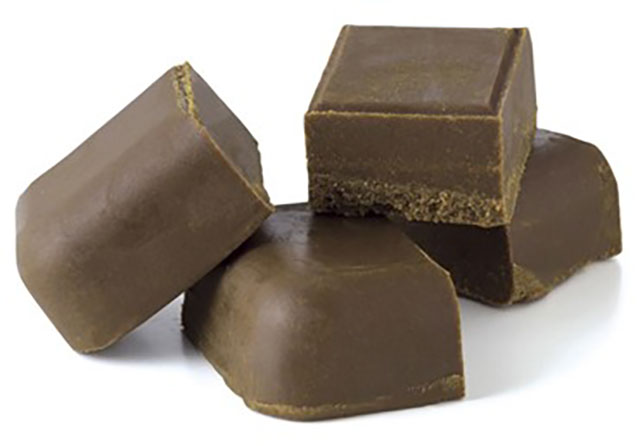
Japanese-style curry is traditionally made from a roux that comes in chocolate-bar like blocks
Other ingredients are up to the cook, but often include meat and vegetables such as onion, potatoes and carrots. Many Japanese people include “secret” ingredients such as oyster sauce or coffee for extra depth of taste. Cheese and other toppings are also popular. Japan has many regional curry variations that highlight local specialty ingredients served with a roux-based curry sauce. Examples include scallop curry in Hokkaido, gyoza dumpling curry in Tochigi, and spam curry in Okinawa.
In the UK, however, Ukawa has tried as many katsu curry products as he can but has found that they often taste somewhat different to katsu curry in Japan. For example, they may contain coconut milk, which is popular in UK curries but not normally used in traditional Japanese curry. He also notes that UK diners also tend to be familiar with Indian and Thai curries and prefer a spicier taste.
Some katsu-named foods have strayed even further from the Japanese original. In recent years, katsu has been used as a name for sweet curry flavored Japanese sauce, rather than specifically a curry dish containing breaded meat cutlets. This has led to surprising (from a Japanese perspective) products such as katsu curry oats or cod with katsu curry sauce.
The katsu curry “croissando”
Yet, although katsu curry seems to have taken on a new identity in the UK, the Japanese original is also available.
Hiden restaurant in the Finsbury Park area of North London, opened in September 2023 and prides itself on “crafted, authentic Japanese curry,” including katsu curry. Its curries are prepared from scratch using S&B curry powder, other spices, and authentic Japanese ingredients such as soy sauce.
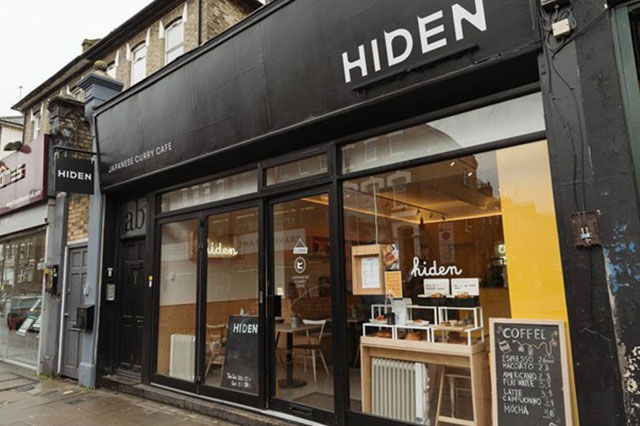
Hiden is a specialist Japanese-style curry restaurant in North London
Hiroki Uda is the manager and cook at Hiden in Finsbury Park and has worked for the company since it opened its first Hiden restaurant in London’s King’s Cross in 2020.
“I heard that katsu curry was getting very popular in London. But when I tried the katsu curry here, it wasn’t katsu curry,” he says.
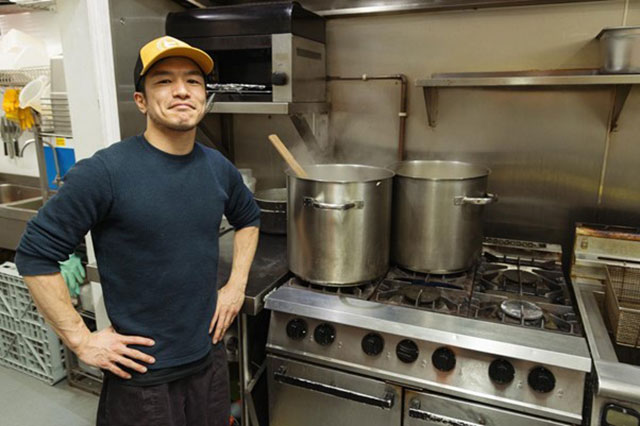
Hidden manager and cook Hiroki Uda
According to Uda, the key to katsu curry is a perfect balance of naturally sweet rice, spicy curry, and crunchy katsu. At Hiden, he says, they add more spices than in Japan to accommodate UK tastes, but otherwise, they are a specialist Japanese curry restaurant. The curry is cooked for around 12 hours, including four hours to caramelize the onions. As well as standard Japanese curry and katsu curry, the menu includes an oil free, gluten free, vegan curry, which took three weeks of experimentation to get right.
Uda also came up with a unique katsu curry recipe for the Finsbury Park restaurant: the “croissando.” This is a croissant sandwich with three choices of filling: vegan curry, katsu, or katsu curry topped with cheese.
He says that katsu sando (katsu sandwiches) in Japan are made with thick fluffy white bread. But rather than going to a specialist Japanese bakery, they decided to use locally made croissants. And the reaction from customers showed it works!
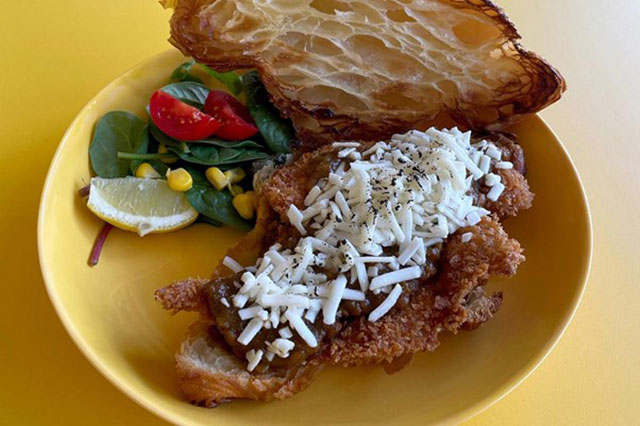
The Hiden katsu curry “croissando”
Ninja katsu curry and “Naporitan” pasta
Another only-in-London katsu curry variation is the Ninja Katsu Curry at So Restaurant in London’s Liverpool Street. The secret ingredient in this jet-black curry sauce is takesumi bamboo charcoal powder from the southern Japan island of Shikoku. As So Restaurant’s Naoko Tanaka explains, not only did ninja wear black clothing, it is said that they carried detoxifying bamboo charcoal in their pockets as an antidote to poison.
She and her husband devised the ninja curry as a fun alternative to ordinary katsu curries at other Japanese restaurants; and, apart from the charcoal powder and being slightly spicier than in Japan to suit local tastes, the recipe is as authentic as possible. On the other hand, as someone who has lived in both London and Tokyo, she personally doesn’t mind how that definition of katsu curry in the UK has drifted somewhat.
In Japan, there are also Western-style dishes in Japan that might shock culinary purists, she notes. For example, Naporitan, an Italian-style dish of ketchup spaghetti, is loosely inspired by food from Naples. Or back in the UK, how about chicken tikka masala, a curry that has been called “Britain’s National Dish,” yet can’t be found in India?
“I don’t think it is necessarily bad,” says Tanaka. “It’s a marriage of cultures that makes a completely new thing.”

A “ninja” katsu curry containing charcoal powder
There’s far more to Japanese curry than katsu!
When they think of Japanese curry, the vast majority of UK diners are likely to think of katsu curry. But S&B’s Ukawa points out that katsu curry is just one of many curry recipes in Japan. There’s curry flavored soup, curry udon noodles, curry flavored croquettes, and even doughnut-like curry filled bread. And as its origin story as a double meal for a hungry baseball pro suggests, katsu curry is relatively high in calories. Yet vegetarian, vegan, and curry flavored healthy dishes are equally possible.
S&B’s Golden Curry Instagram page for the UK showcases Japanese curry’s impressive adaptability with curry versions of local recipes, such as Japanese curry flavored chicken pie, curry baked potatoes, and turkey made with leftover Christmas dinner. In Japan, curry is a family favorite, so S&B is also considering how to encourage British children to eat more Japanese curry, which Ukawa describes as “tasty, healthy and easy to prepare.”
Over 150 years since old-fashioned English curry traveled across the world to Japan, the heart-warming dish’s UK journey has only just begun!

